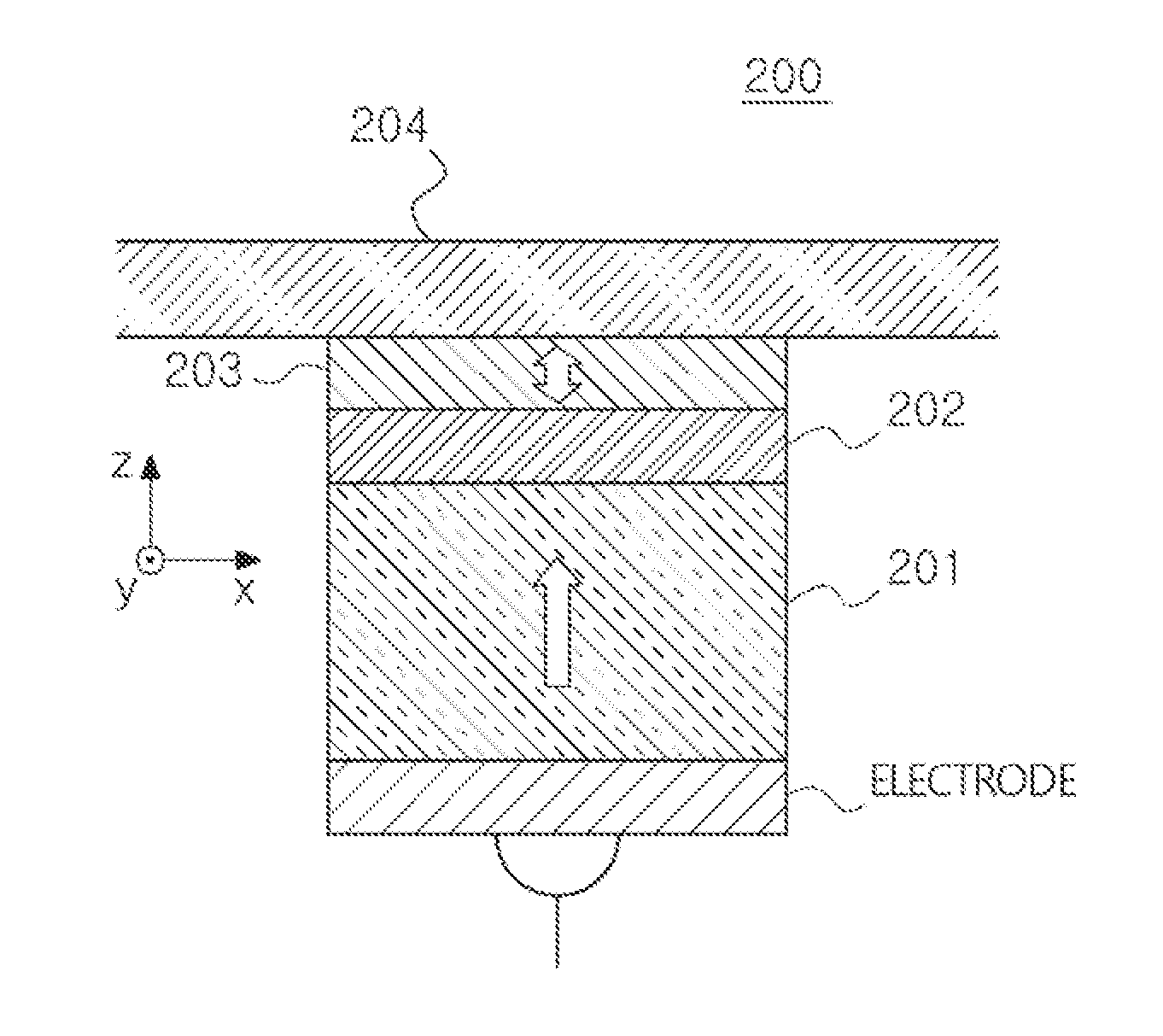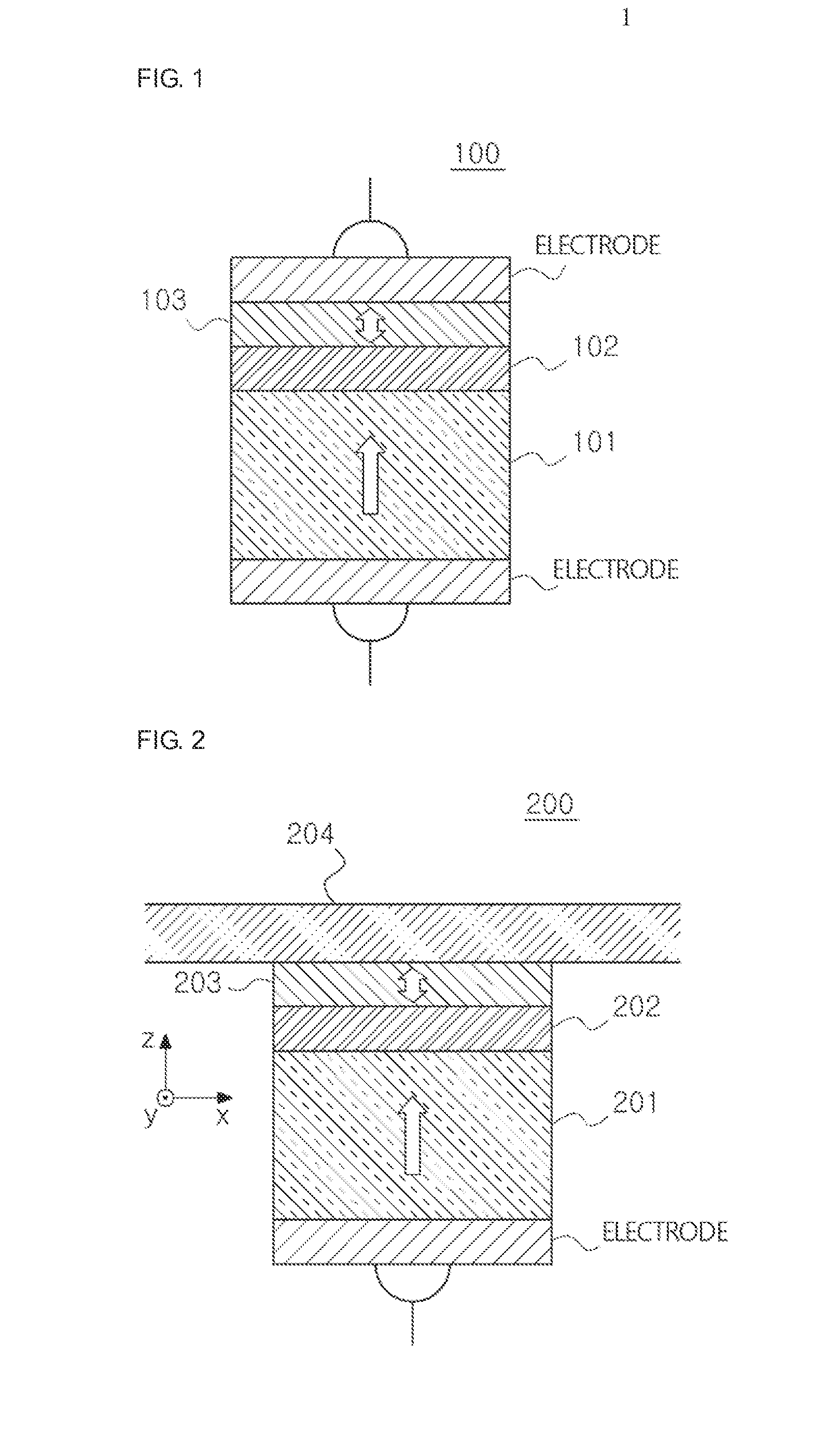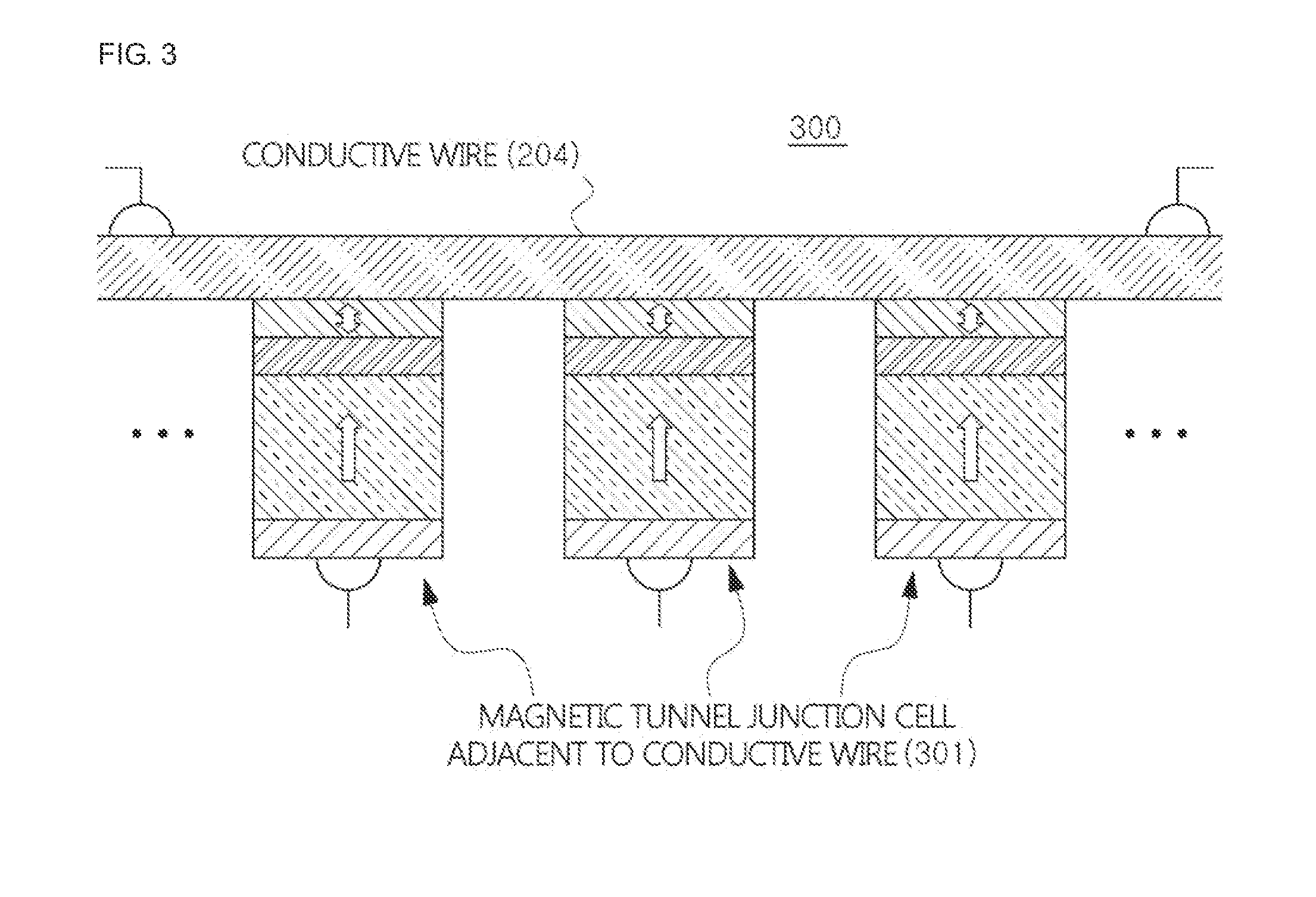Magnetic memory device using in-plane current and electric field
- Summary
- Abstract
- Description
- Claims
- Application Information
AI Technical Summary
Benefits of technology
Problems solved by technology
Method used
Image
Examples
experimental example 1
Presence or Absence of a Flux Reversal of the Free Magnetic Layer According to a Current and a Magnetic Field Applied to the Device of the Present Disclosure
[0070](1) As shown in FIG. 3, if each cell of the magnetic memory device according to an embodiment of the present disclosure is selected using a voltage or not selected, the presence or absence of a flux reversal of the free magnetic layer is determined depending on various in-plane currents applied to the conductive wire 204 and a magnetic field applied from the outside.
[0071](2) Structure and properties of the device are as follows.
[0072]Cross-sectional area of the entire structure=400 nm′
[0073]Free magnetic layer 203: thickness (t)=2 nm, perpendicular magnetic anisotropy constant (K⊥)=8×106 erg / cm3, saturation magnetization (MS)=1000 emu / cm3, Gilbert damping constant (α)=0.1, spin-hall angle (θSH)=0.3′
[0074](3) FIG. 4a is a graph showing a presence or absence of a flux reversal of a free magnetic layer according to a current...
PUM
 Login to View More
Login to View More Abstract
Description
Claims
Application Information
 Login to View More
Login to View More - Generate Ideas
- Intellectual Property
- Life Sciences
- Materials
- Tech Scout
- Unparalleled Data Quality
- Higher Quality Content
- 60% Fewer Hallucinations
Browse by: Latest US Patents, China's latest patents, Technical Efficacy Thesaurus, Application Domain, Technology Topic, Popular Technical Reports.
© 2025 PatSnap. All rights reserved.Legal|Privacy policy|Modern Slavery Act Transparency Statement|Sitemap|About US| Contact US: help@patsnap.com



